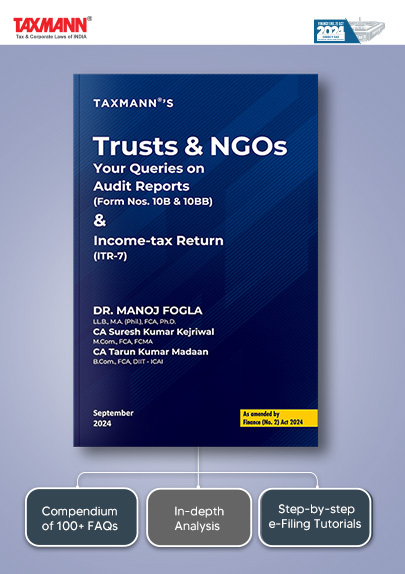Withdrawal/Non-pressing of Grounds by Assessee’s Counsel isn’t Mistake Apparent from Records for Sec. 254 | ITAT
- Blog|News|Income Tax|
- 2 Min Read
- By Taxmann
- |
- Last Updated on 4 January, 2024
Case Details: M/s. Dhanwan Leasing and Finance Company Limited vs. ITO - [2024] 158 taxmann.com 44 (Indore-Trib.)
Judiciary and Counsel Details
-
- Vijay Pal Rao, Judicial Member & B.M. Biyani, Accountant Member
- Sumit Nema, Sr. Adv. Gagan Tiwari & Pankaj Shah for the Appellant.
- Ashish Porwal, Sr. DR for the Respondent.
Facts of the Case
The assessee filed the instant application under section 254(2) seeking recall/rectification of the order passed by the Tribunal for Assessment Year 2010-11. Assessee contented that its appeal was wrongly dismissed by ITAT being not pressed by the Counsel at the desire of the assessee. The assessee raised the contention that the Counsel had no authorization to withdraw the ground raised by the assessee. Yet, the ITAT allowed the withdrawal of the appeal on such grounds.
ITAT Held
The Tribunal held that the assessee argued that Counsel didn’t have any authorization to withdraw the grounds raised by the assessee. In this regard, the ‘Letter of Authority’ filed by the assessee’s Counsel was reproduced. Considering the same, one can easily find that the assessee has given authority to his Counsel to appear and present the assessee before ITAT. Such authority was fullest, unlimited and unrestricted, and there was no rider mentioned therein.
Secondly, the assessee has specifically authorized his counsel “to compound matters wherever necessary” This compounding authorized the assessee’s Counsel to withdraw full or part of the appeal, i.e. one or more grounds.
Thus, the withdrawal or non-pressing of the ground by Counsel was within the power and the authority being representative of the assessee. Failure to raise ground during a hearing and later attempting to address it through a Section 254(2) application after an unfavourable decision by ITAT would set a dangerous precedent.
Hence, the claim by the assessee that the ITAT acknowledged withdrawal or non-pressing without Counsel’s authorization lacks merit.
Disclaimer: The content/information published on the website is only for general information of the user and shall not be construed as legal advice. While the Taxmann has exercised reasonable efforts to ensure the veracity of information/content published, Taxmann shall be under no liability in any manner whatsoever for incorrect information, if any.

Taxmann Publications has a dedicated in-house Research & Editorial Team. This team consists of a team of Chartered Accountants, Company Secretaries, and Lawyers. This team works under the guidance and supervision of editor-in-chief Mr Rakesh Bhargava.
The Research and Editorial Team is responsible for developing reliable and accurate content for the readers. The team follows the six-sigma approach to achieve the benchmark of zero error in its publications and research platforms. The team ensures that the following publication guidelines are thoroughly followed while developing the content:
- The statutory material is obtained only from the authorized and reliable sources
- All the latest developments in the judicial and legislative fields are covered
- Prepare the analytical write-ups on current, controversial, and important issues to help the readers to understand the concept and its implications
- Every content published by Taxmann is complete, accurate and lucid
- All evidence-based statements are supported with proper reference to Section, Circular No., Notification No. or citations
- The golden rules of grammar, style and consistency are thoroughly followed
- Font and size that’s easy to read and remain consistent across all imprint and digital publications are applied






 CA | CS | CMA
CA | CS | CMA


